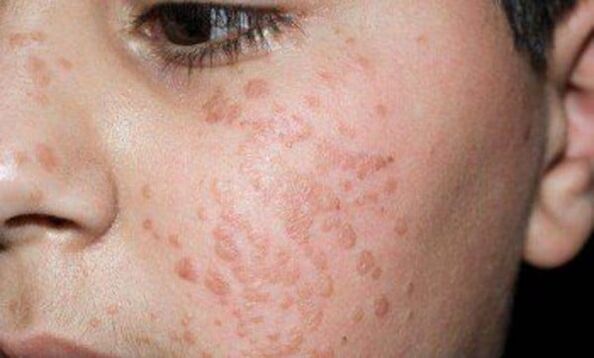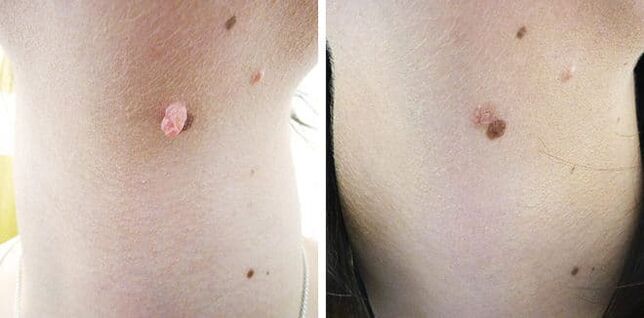Papillomas and condylomas are small growths on the skin of a viral nature. You should be able to differentiate between them in order to timely notice potentially dangerous formations and take the necessary measures. The main thing that distinguishes papillomas from condylomas is virus-pathogenis of type.
due to neoplasm
Human papillomavirus (HPV) has over a hundred different strains. HPV enters the body through household contact or unprotected intercourse. It is possible for a baby to be infected from the mother while passing through the birth canal.
The formation of growths indicates the rapid division of cells in the basal layer of the skin. This occurs under the influence of a virus, the activation of which in most cases is associated with a decrease in the immune defense. Depending on the strain, papillomas on the body orCondyloma appears.
Characteristic features of papillomas
Papilloma is a benign neoplasm that does not cause discomfort, except aesthetic. Characteristic features of papillomas:
- soft homogeneous structure;
- presence of one leg;
- small size (up to 10 mm in diameter);
- Medium pigmentation.
Papillomas are localized on any part of the body, except for the mucous membrane of the genitals. As a rule, the color of the growth varies from a natural skin tone to pinkish-reddish shades, however, highly pigmented papillomas are also not a pathology. The growth of hair on the body of the papilloma is a variant of the norm.

Papillomas are not dangerous if they do not interfere with the patient and are not accidentally injured in everyday life. This type of growth is formed due to the action of 2, 7 and 28 virus strains. You in everyday lifeAnd can become infected with this type of HPV during sexual intercourse.
Features of genital warts
There are two types of warts - pointed growth and wide. The first type appears with HPV infection, and widespread growth is one of the symptoms of syphilis.
The places of localization of genital warts are mucous membranes, mainly the urogenital region, as well as skin folds that are subject to friction against clothing.
The structure of genital warts is papillary. The formations are attached to a thin stem, the growth is fed through small vessels and capillaries. Unlike papillomas, condylomas are often inflamed, ulceration of the growth body is possible.
Genital warts are caused by strains of the virus 16, 18, 54. This type of HPV is potentially dangerous, especially for women. There is a direct link between this type of virus and the development of cervical cancer. Infection through sexual intercourseit happens.
How to distinguish papillomas from genital warts?
In the photo it is easy to notice the external difference between the growths - papillomas are homogeneous, while condylomas have a fine papillary structure.
- The difference between papillomas and warts lies in the color of the growth. Papillomas can be highly pigmented, the warts are usually lighter in color and do not differentiate from the mucous membrane.
- HPV, which provokes the development of papillomas, is transmitted by household contact, using personal hygiene products, and even through a handshake (in the presence of skin microtrauma). Warts are transmitted only sexually.
- Warts swell. Papillomas can increase in size, acquire signs of swelling and bruising, but only as a result of a traumatic effect.
- The shape of the papilloma is mainly a round or oval "head" located on a soft stem. Condylomas have an irregular outline, may be arranged in clusters. For genital warts, narrowing from the stem to the end is characteristic, whichmakes it possible to distinguish them from papillomas.
- The appearance of different types of growth is due to different strains of the virus.

It is important to remember the main difference between papillomas and warts - growths on the genitals and mucous membranes must be removed.
Why is evolution dangerous?
Papillomas and condylomas have traditionally been considered safe neoplasms on the skin, but in the second case the risk of degeneration of benign cells into malignant cells is high.
Condylomas are cutaneous manifestations of the action of the oncogenic type of virus. Years of research have identified an association between HPV and cervical cancer. Timely diagnosis with further removal of genital warts can significantly reduce the risk of developing cancer in womenhelps.
Growths can be located not only on the skin and external genitals, but also on the vagina and cervix. Due to the peculiarities of blood circulation in the genitals, condyloma receives sufficient nutrition and can grow rapidly. In gynecology, such cases occurThese are when the condyloma located on the wall of the vagina grows up to 10 cm in diameter.
signs of removal
Warts should be removed even if they do not cause discomfort. This is mainly due to the risk of infection of the sexual partner.
Whether or not to remove papillomas located on the skin, is an individual matter for each patient. The risk of degeneration of benign papillomas into an oncological neoplasm increases when the growth body is damaged. It can be rubbed against clothing, fingernailsCan be caused by accidental damage to a washcloth or during hygiene procedures.
You should consult a dermatologist if:
- papilloma has greatly increased in size;
- When pressed, there is a feeling of discomfort;
- bleeding or purulent discharge is noted;
- The skin around the growth becomes inflamed.
Removal of the build-up is a matter of five minutes. The procedure is almost painless. It is important to understand that timely diagnosis will allow timely detection of the onset of cell degeneration and prevent the development of oncology.
How are build-ups removed?
Any skin growths should be removed by a professional. Self-suppression of papillomas with the help of folk remedies is not always effective. Removal of genital warts at home is strictly prohibited.

Before the procedure, it is necessary to conduct a series of examinations. First of all, the patient's blood is examined to determine the type of virus that caused the appearance of the neoplasm.
With multiple condylomas, the patient is prescribed antiviral and immunomodulatory therapy. This allows you to stop the spread of the virus and tune the immune system to fight HPV. To get rid of genital warts, one in the compositionOintments with immunostimulants (for example, drugs based on interferon) help. Such drugs are available in the form of suppositories, which allow you to successfully fight against growths on the walls of the vagina.
Ways to remove build-up:
- cryodestruction;
- electrocoagulation;
- laser burns;
- removal with a radio knife;
- excision with a scalpel.
When genital warts are removed, the tissues obtained as a result of the procedure are sent for histological analysis. For this purpose, surgical excision or laser removal is indicated.
Electrocoagulation is the scarring of the neoplasm. The method has worked well for the removal of small papillomas.
Cryodestruction is used to remove neoplasms on the skin, but not on the mucous membranes. Liquid nitrogen is applied to the growth, which causes cell necrosis, as a result, the papilloma simply disappears.
Radio wave removal or radio knife is an effective and almost painless method for removing genital warts. Under the influence of radio waves, the cells of the neoplasm are destroyed. The procedure is performed under local anesthesia.
Laser burnout of genital warts is indicated in the presence of a large number of growths. The advantages of the method are the cauterization of the vessels and capillaries that feed the formation. As a result of exposure, no scars remain on the skin, the risk of bleeding is excludedThe complete restoration of the epidermis after removal occurs within 5-7 days.
To remove genital warts, folk remedies are not used because of the high risk of damage to the mucous membrane by aggressive components of the composition. Alkaline pharmaceutical preparations are also prohibited.
To find out how warts differ from papillomas, a photo will help. If formations appear on the genitals, it is recommended to consult a doctor, and not try to remove them yourself.














































































